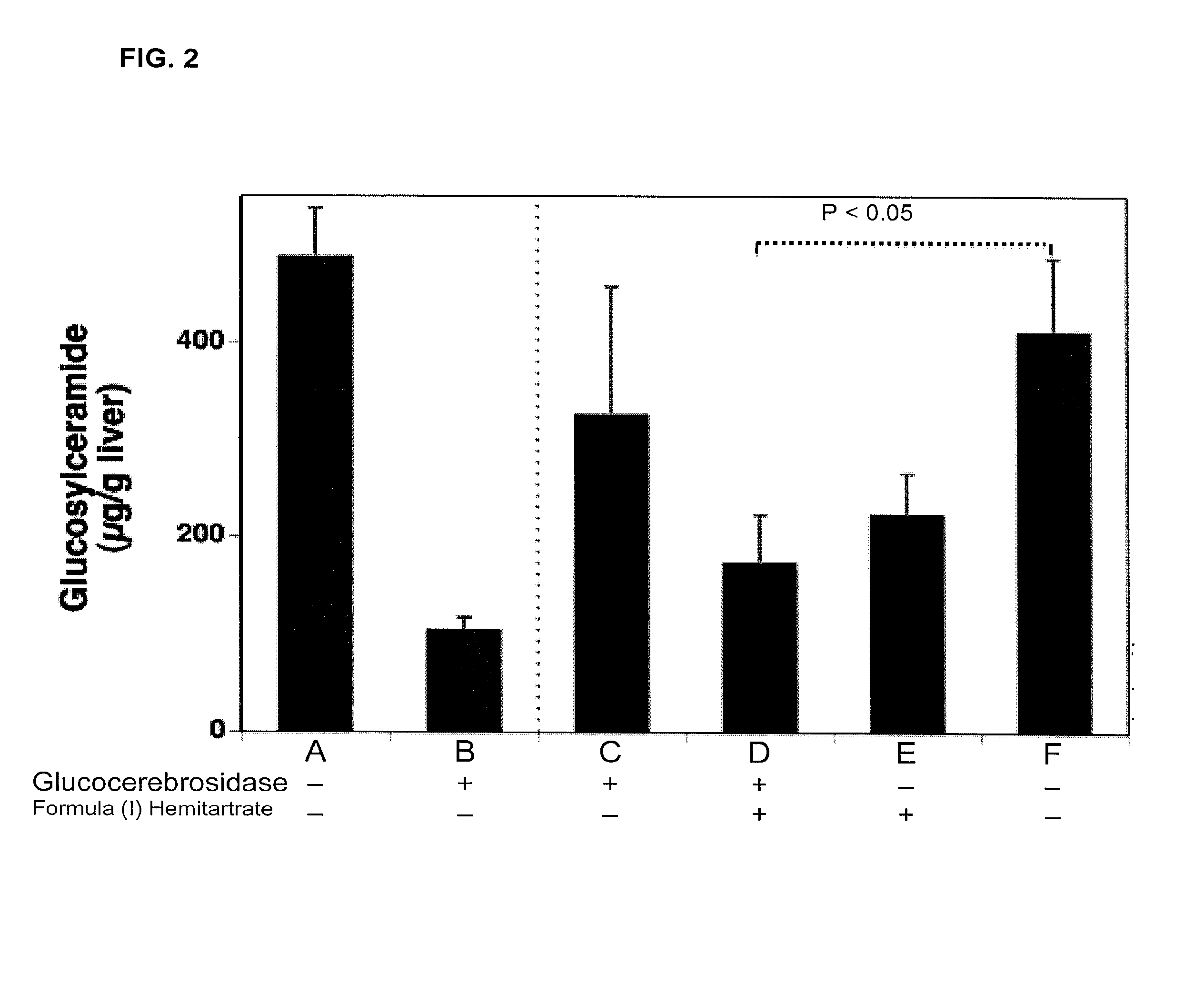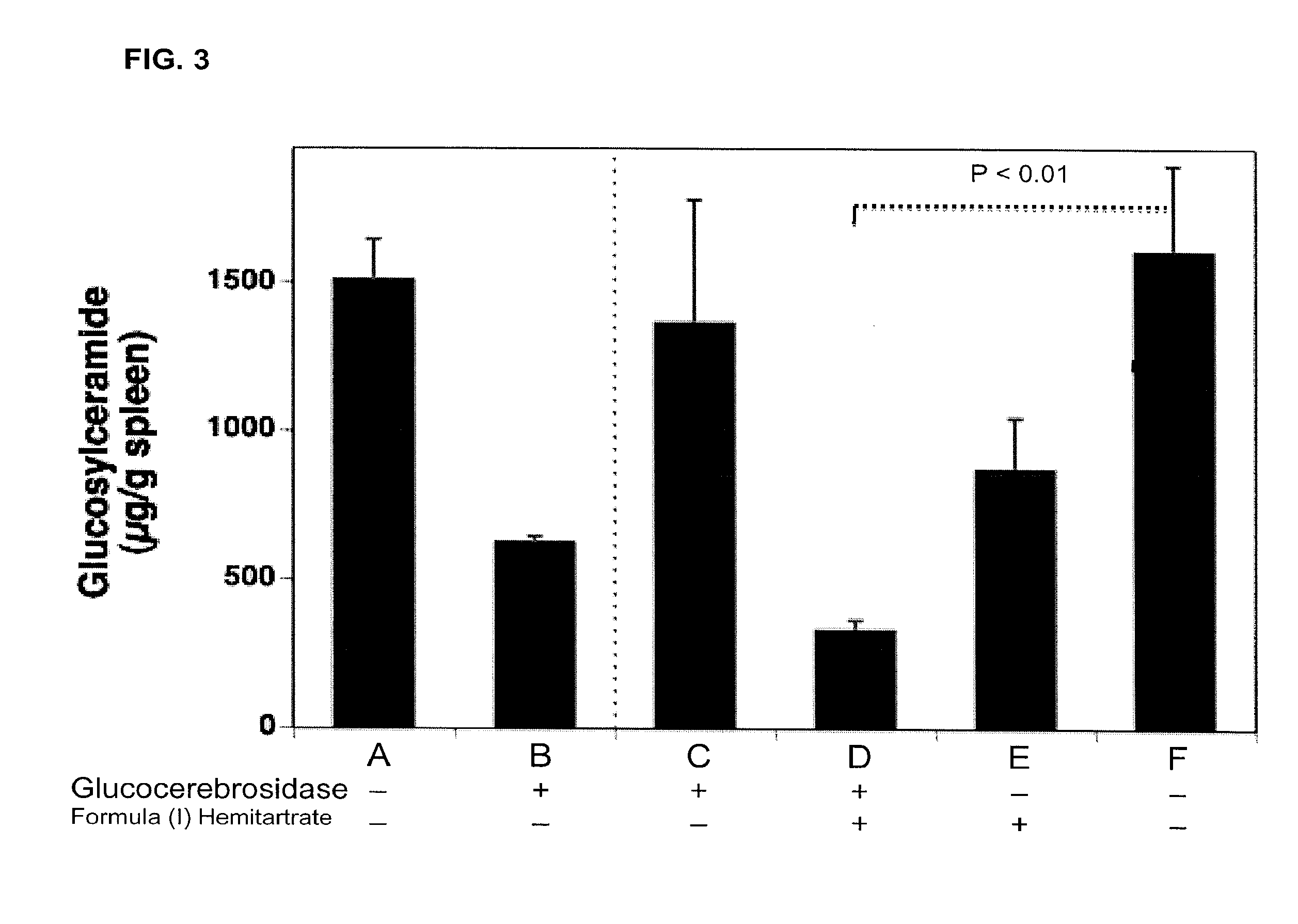Amorphous and a crystalline form of genz 112638 hemitartrate as inhibitor of glucosylceramide synthase
- Summary
- Abstract
- Description
- Claims
- Application Information
AI Technical Summary
Benefits of technology
Problems solved by technology
Method used
Image
Examples
example 1
Preparation of Salts of Formula (I)
[0116]The hemitartrate salt of Formula I is readily crystallized and exhibits many beneficial properties as compared to other salts. For example, the following acids were used in the preparation of salts of the compound represented by Formula (I): citric acid (generating salts in 1:1, 1:2, and 1:3 (salt:Formula I) ratios); L-malic (1:1 and 1:2); methane sulfonic acid (1:1); fumaric acid (1:1 and 1:2); hydrochloric acid (1:1); acetic acid (1:1) and tartaric acid (1:1 and 1:2). Only salts generated by hydrochloric acid (1:1); tartaric acid (1:1) and tartaric acid (1:2) were of solid form. Of these three salts hydrochloric acid (1:1) and tartaric acid (1:1) were found to be hygroscopic and non-crystalline and therefore unacceptable for use in a pharmaceutical product. The hemitartrate (1 salt:2 Formula I) of the compound represented by Formula I was found to be crystalline and non-hygroscopic.
Acetone Preparation of Formula (I) Hemitartrate
[0117]L-tart...
example 2
Preparation Crystalline Formula (I) Hemitartrate
[0122]Formula (I) Hemitartrate was crystallized by several methods. Batch 1 was prepared using ethyl acetate / acetone solvents and dried at room temperature. Batch 3 was prepared using ethyl acetate / acetone solvents and recrystallized from ethyl acetate. Batch 4 was recrystallized from acetone using Batch 1 material. Batch 5 was recrystallized from isopropanol. Batch 7 was prepared using ethyl acetate / acetone solvent similar to Batch 1 but in a large scale, Batch 8 was prepared using acetone only with no further recrystallization. Batch 9 was prepared using acetone only with brief reflux, again no further recrystallization.
TABLE 1Summary of polymorphism screening of Batches1-9 of Formula (I) HemitartrateDSCMeltingBatchProcessingPontEnthalpyMicro-No.Method(° C.)(J / g)scopeTGA1Acetone / ethyl162−81.4Crystal99.91% atacetate100° C.precipitation*98.73% at175° C.2Acetone / ethyl164−95.6CrystalN / Aacetateprecipitation-dried at roomtemperature*3Aceto...
example 3
Physical Properties of Formula (I) Hemitartrate
[0127]Differential scanning calorimetry (DSC). DSC data was collected on a TA Q100 instrument utilizing nitrogen as the purge gas. Approximately 2-5 mg of sample was weighed accurately into an aluminum DSC pan. The pan was covered with a lid and perforated with a forceps. The sample cell was equilibrated at 30° C. and heated at a rate of 10° C. per minute to a final temperature of 220° C.
[0128]Hot stage microscopy. Hot stage microscopy was performed using a Linkam hot stage (model FTIR 600) mounted on a Leica DM LP microscope equipped with a Sony DXC-970MD 3CCD camera for image collection. A 40× objective was used with polarized light to view samples. Each samples was placed between two cover slips. Each sample was visually observed as the stage was heated. Images were captured using Links version 2.27 (Linkam). The hot stage was calibrated using USP melting point standards.
[0129]The endothermic transition observed in the DSC profile wa...
PUM
| Property | Measurement | Unit |
|---|---|---|
| Time | aaaaa | aaaaa |
| Percent by mass | aaaaa | aaaaa |
| Percent by mass | aaaaa | aaaaa |
Abstract
Description
Claims
Application Information
 Login to View More
Login to View More - R&D
- Intellectual Property
- Life Sciences
- Materials
- Tech Scout
- Unparalleled Data Quality
- Higher Quality Content
- 60% Fewer Hallucinations
Browse by: Latest US Patents, China's latest patents, Technical Efficacy Thesaurus, Application Domain, Technology Topic, Popular Technical Reports.
© 2025 PatSnap. All rights reserved.Legal|Privacy policy|Modern Slavery Act Transparency Statement|Sitemap|About US| Contact US: help@patsnap.com



